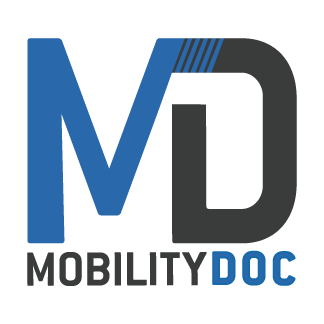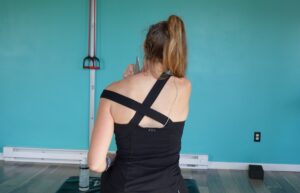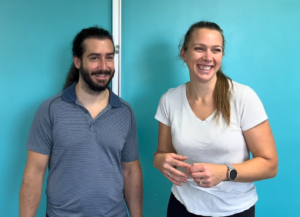Described as a potentially “devastating injury for an elite athlete, but a nuisance for the general population” turf toe is a very common injury among football, soccer, gymnastics and basketball players (1). If not taken care of, this injury can be quite painful, linger, and significantly impact your mobility. In this blog, we’ll dive deep into what turf toe is, how it happens, the anatomy involved, and most importantly, how to treat it effectively.
What Is Turf Toe?
Turf toe is a sprain of the ligaments around the big toe joint, specifically the metatarsophalangeal (MTP) joint. This injury is commonly seen in sports that involve running, jumping, or sudden directional changes, especially on artificial turf—hence the name “turf toe.” What happens is your big toe hyperextends. This hyperextension of the MTP joint impacts the ligaments and tendons surrounding the toe. This includes ones in the bottom of your foot like the plantar plate and the flexor tendon that runs along the bottom of your big toe.

How Does Turf Toe Happen?
Turf surfaces are a lot less forgiving than natural dirt and grass. When you’re doing things like pushing off while running, jumping, or kicking, the harder surface underneath you doesn’t allow for as much give as regular ground. Turf toe usually occurs when the big toe is forcibly bent upward beyond its normal range of motion. Examples of this are:
– Sudden stops or starts: When an athlete pushes off or brakes quickly, the big toe may extend excessively.
– Jumping: Landing awkwardly can place undue stress on the toe joint.
– Kicking: A powerful kick can cause the toe to bend too far back.
How Do I Treat Turf Toe?
Treating turf toe effectively involves a combination of rehabilitation exercises, and gradual reintroduction of movement. It’s important that we are working on improving pain free range of motion. Pain free being the key words!! If your injury was mild, you can start this 3-5 days into healing. If it’s more severe, it’s important to let things calm down and we encourage you to check with your doctor. Here’s a structured approach to help you heal:
Rehabilitation Exercises
Integrating specific exercises can help expedite healing and restore function:
 Gently scrape around the big toe to promote blood flow and reduce inflammation. *Avoid bones*
Gently scrape around the big toe to promote blood flow and reduce inflammation. *Avoid bones*
 Use a table or box to help stabilize yourself as you gently stretch your toes. You want to introduce this slowly as we are trying to achieve pain free movement! Only do what feels good. When this feels comfortable try moving onto the next exercise.
Use a table or box to help stabilize yourself as you gently stretch your toes. You want to introduce this slowly as we are trying to achieve pain free movement! Only do what feels good. When this feels comfortable try moving onto the next exercise.
 In a kneeling position, place your toes into the ground. Sit back on your heels to stretch the big toe joint. This can be very intense! Again, we are looking for pain free range, so go slowly and don’t sit all the way back right away (unless it feels good)
In a kneeling position, place your toes into the ground. Sit back on your heels to stretch the big toe joint. This can be very intense! Again, we are looking for pain free range, so go slowly and don’t sit all the way back right away (unless it feels good)
 Place a towel or sock on the floor and use your toes to scrunch it toward you. This strengthens the intrinsic muscles of the foot.
Place a towel or sock on the floor and use your toes to scrunch it toward you. This strengthens the intrinsic muscles of the foot.
 Stand with feet flat and try to create an arch in your foot without lifting or curling your toes. This is a very small and often difficult movement to achieve. Keep at it!
Stand with feet flat and try to create an arch in your foot without lifting or curling your toes. This is a very small and often difficult movement to achieve. Keep at it!
 While standing, move your ankle in circles. You’ll roll around the insides and outside of your feet to help improve range of motion in your ankle joint as well as in the feet and toes.
While standing, move your ankle in circles. You’ll roll around the insides and outside of your feet to help improve range of motion in your ankle joint as well as in the feet and toes.
Reintroducing Movement
To start integrating more movement into your routine:
Begin with short walks. We know it’s hard… especially if you’re a runner or trying to get back to sport. Trust us! Sticking with walking will help you get back to the real you sooner! This low-impact activity helps reintroduce movement without overwhelming your toe.
 Once walking feels good, gradually add two foot and single-leg hops. This will introduce your foot to the rigors of running without too much strain.
Once walking feels good, gradually add two foot and single-leg hops. This will introduce your foot to the rigors of running without too much strain.
When walking feels great and you’re plyometrics feel good it’s time to gently introduce running back into your routine
– Intervals: Start with more walking than running. For example, alternate between 1 minute of running and 2 minutes of walking.
– Gradual Increase: As you become comfortable, increase your running intervals while decreasing walking time. This will eventually lead to you running without breaks
 When running is feeling good it’s time to slowly begin introducing sport specific movements. This is again gradual! Begin working on cutting, and other sport specific movements that are pertinent to you and your performance.
When running is feeling good it’s time to slowly begin introducing sport specific movements. This is again gradual! Begin working on cutting, and other sport specific movements that are pertinent to you and your performance.
When to Progress
Progressing through these stages depends on your body’s response to the exercises and the severity of your initial injury. If you have a more mild injury you can use either a more stiff shoe that limits the amount of extension your big toe can get or you can try taping the toe for support. More severe injuries may require a boot or crutches to allow for more protection. Healing can take weeks or even months, so it’s essential to listen to your body and go slowly.
If you have questions or aren’t sure about your progress, consulting a trusted professional, such as a physical therapist or doctor, is crucial. If, after a few weeks of exercises, you’re not seeing improvement, seek professional help.
Watch This How To Fix Turf Toe Video
Turf toe may be a common injury, but it doesn’t have to sideline you. By understanding what it is, how it happens, and following a structured treatment plan, you can expedite your healing and get back to the activities you love. Remember, patience and consistency are key—your feet will thank you!
References:
1 – Aran F, Ponnarasu S, Scott A. Turf Toe. [Updated 2022 Oct 24]. In: StatPearls [Internet]. Treasure Island (FL): StatPearls Publishing; 2024 Jan-. Available from: https://www.ncbi.nlm.nih.gov/books/NBK507810/
Transform Your Foot and Ankle Health with Our 4-Week Program!
Are you ready to say goodbye to foot and ankle pain? Our 4-Week Foot and Ankle Recovery Program offers a comprehensive approach to improve your mobility, stability, and strength—7 days a week!
Here’s What You’ll Experience:
✅ Daily Exercises: Enjoy a mix of mobility, stability, and strength exercises that build on each other for optimal results.
✅ A System Proven To Work: Access tips and insights from physical therapy professionals to maximize your progress. We’ve seen this work for thousands of patients so why not you?
✅ Long-Term Health Strategies: These techniques help you maintain your foot and ankle health long after the program ends.
Why Choose Our 4-Week Program?
– Systematic Approach: Each week is structured to progressively enhance your capabilities.
– Suitable for All Levels: Whether you’re an athlete or looking to stay active, our program fits your needs!
– Achieve Lasting Results: Reclaim your mobility and enjoy a more active lifestyle without pain.
Don’t wait! Invest in your foot and ankle health today. Click the link below to start your journey to recovery!





